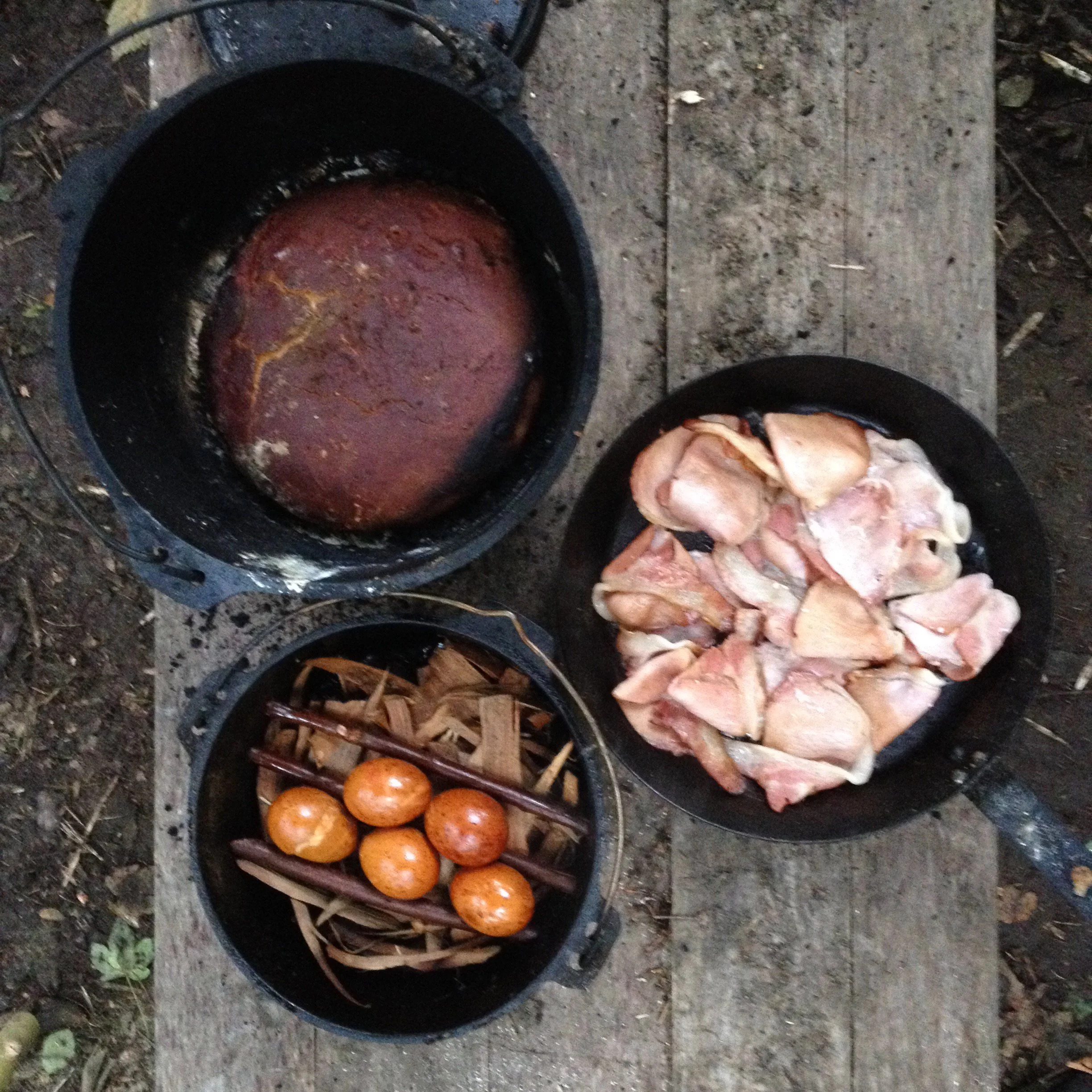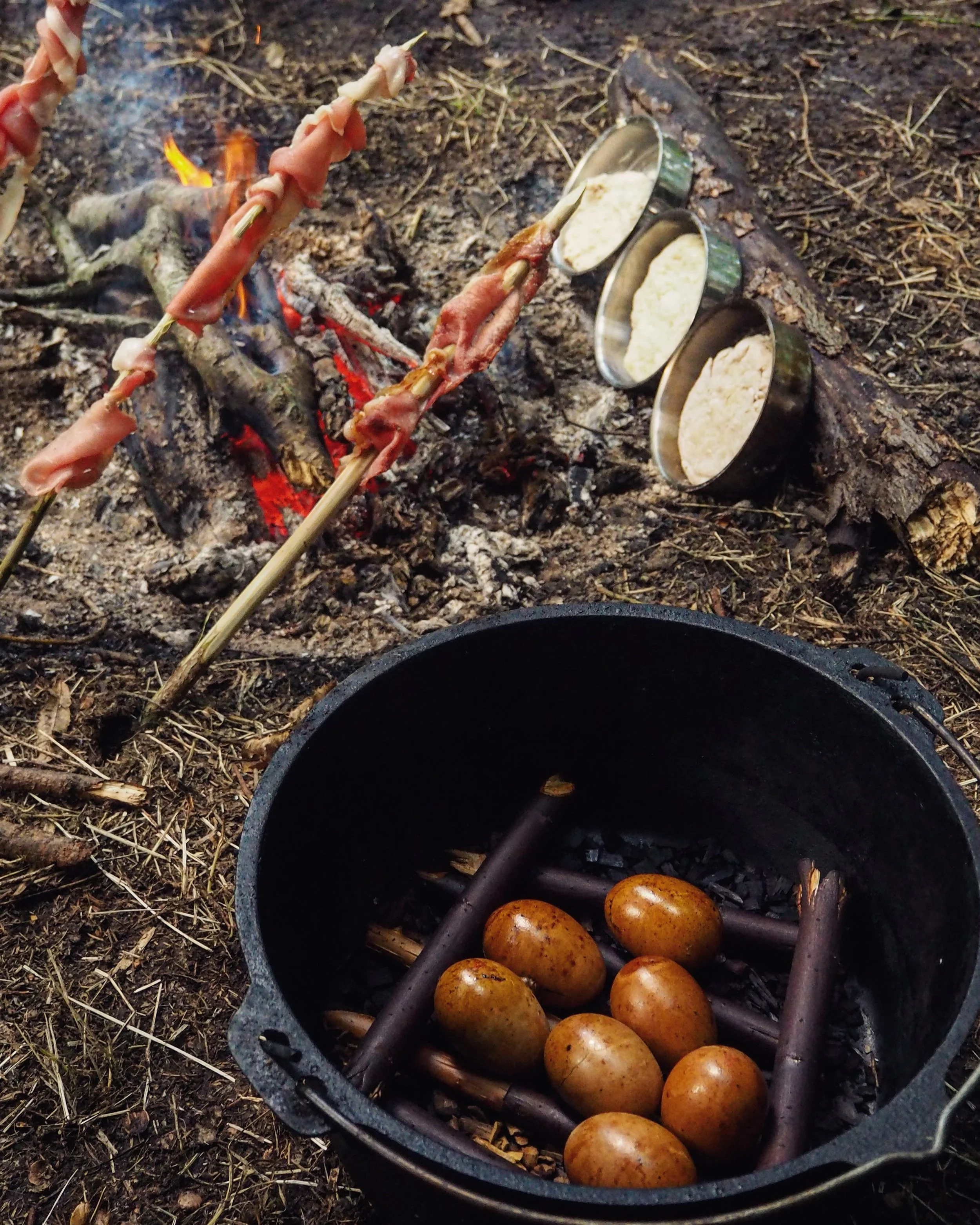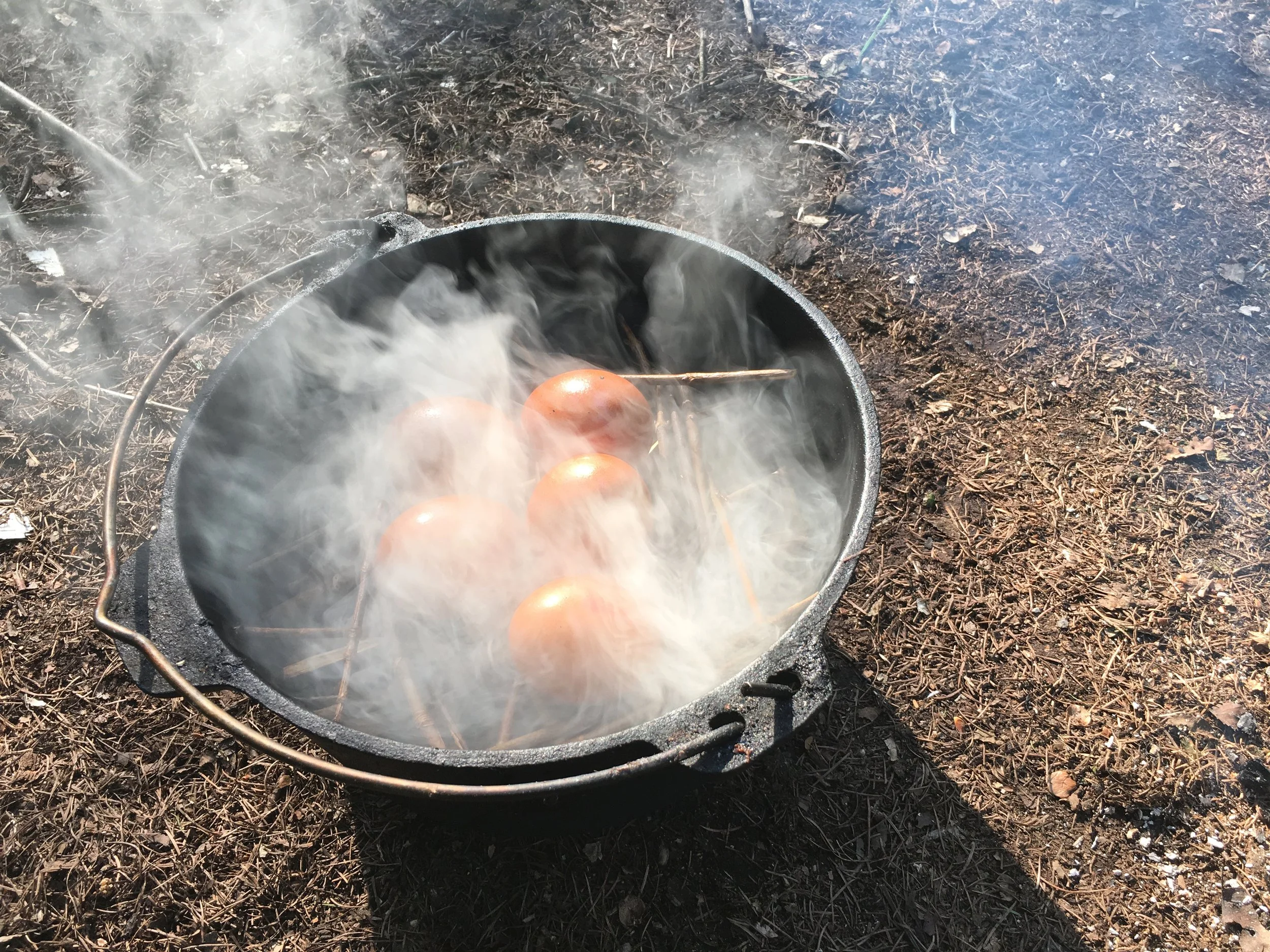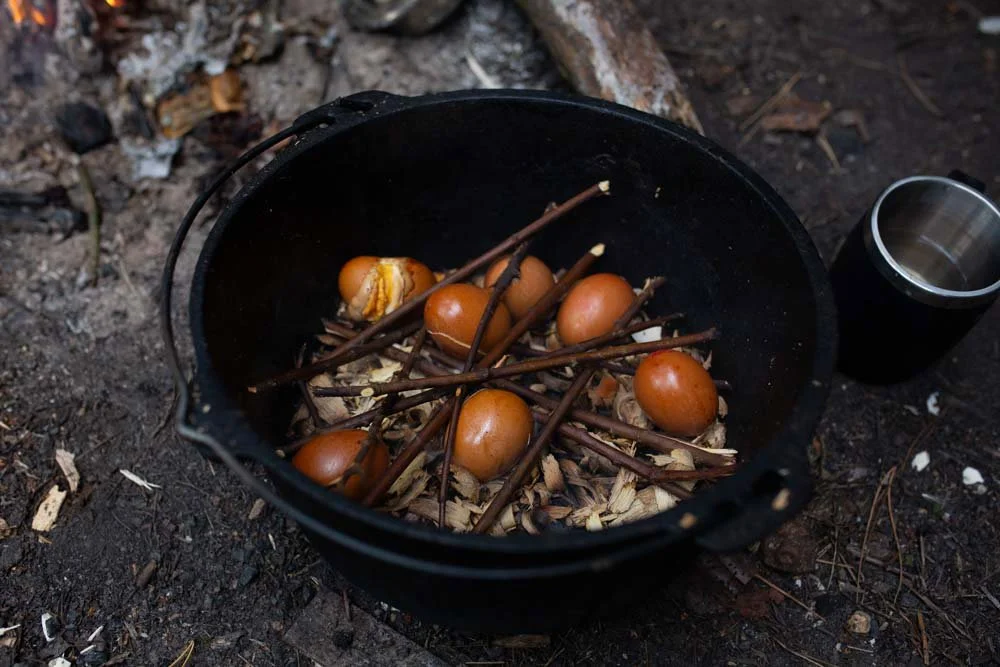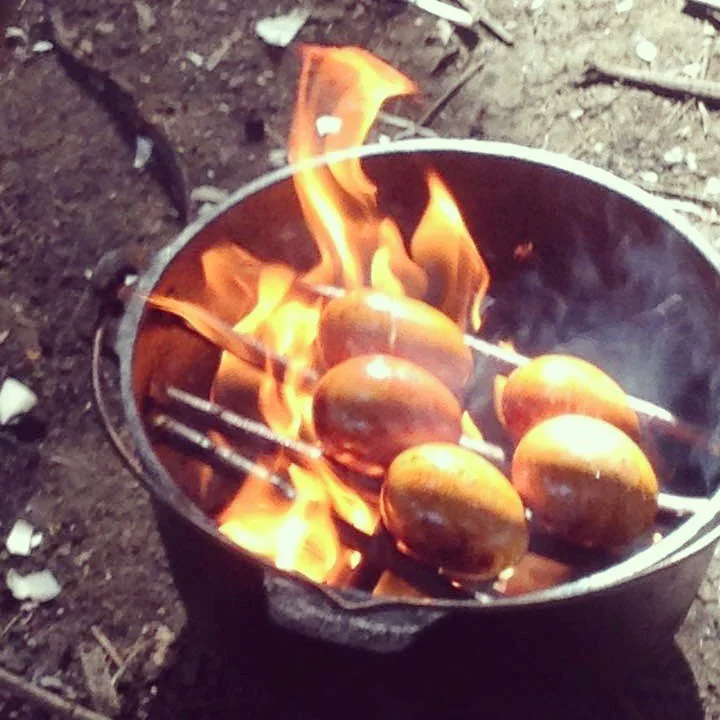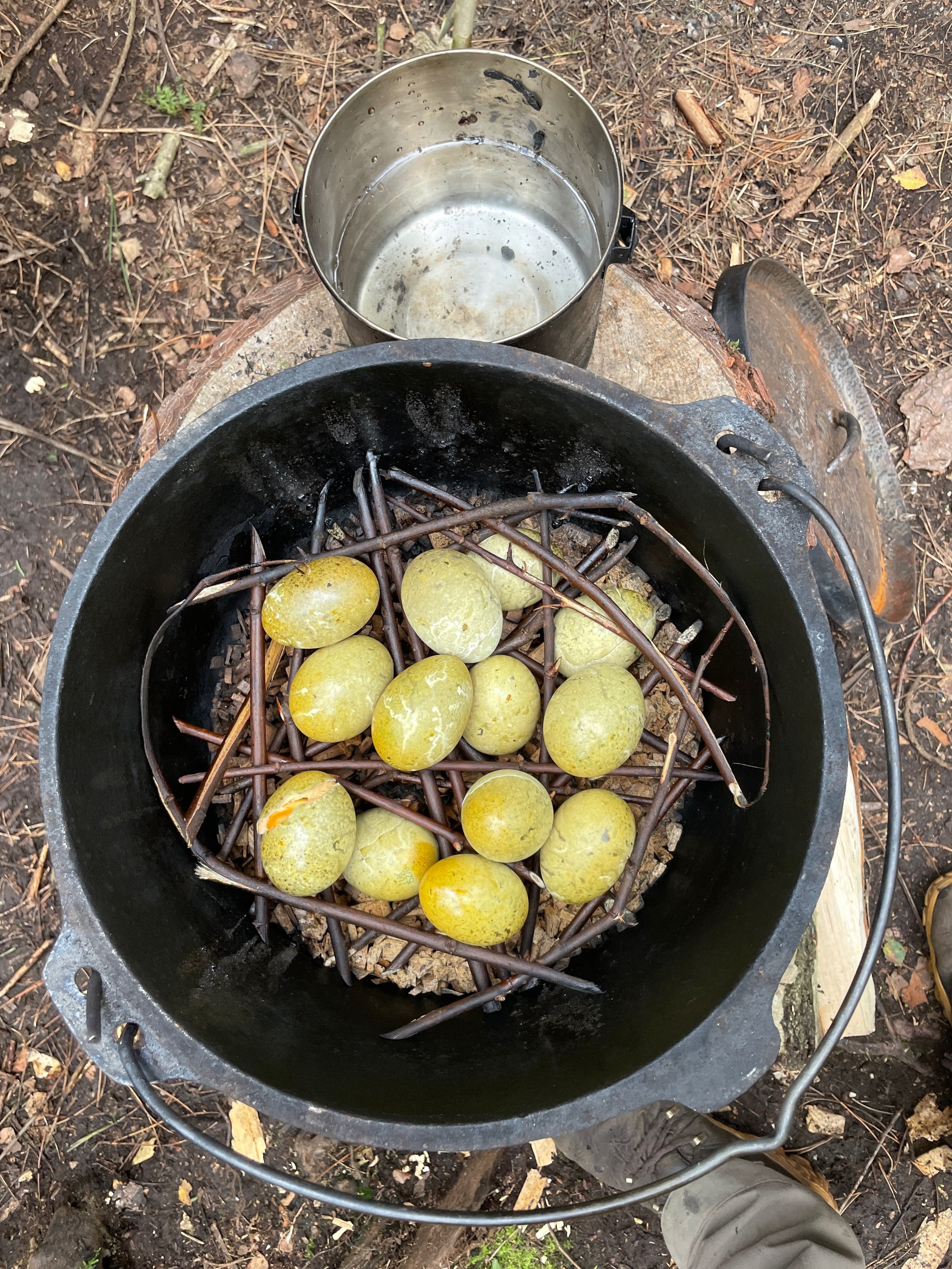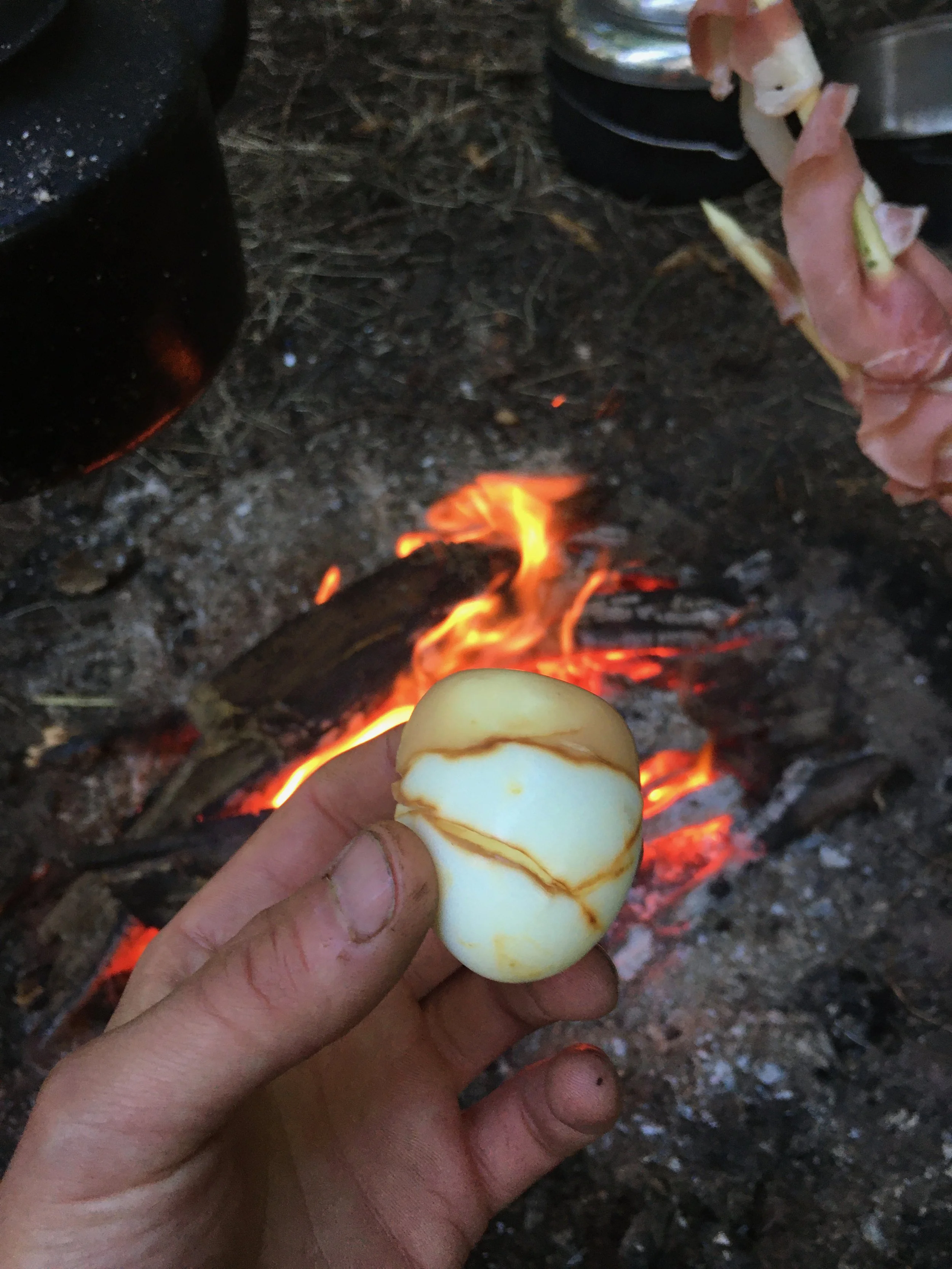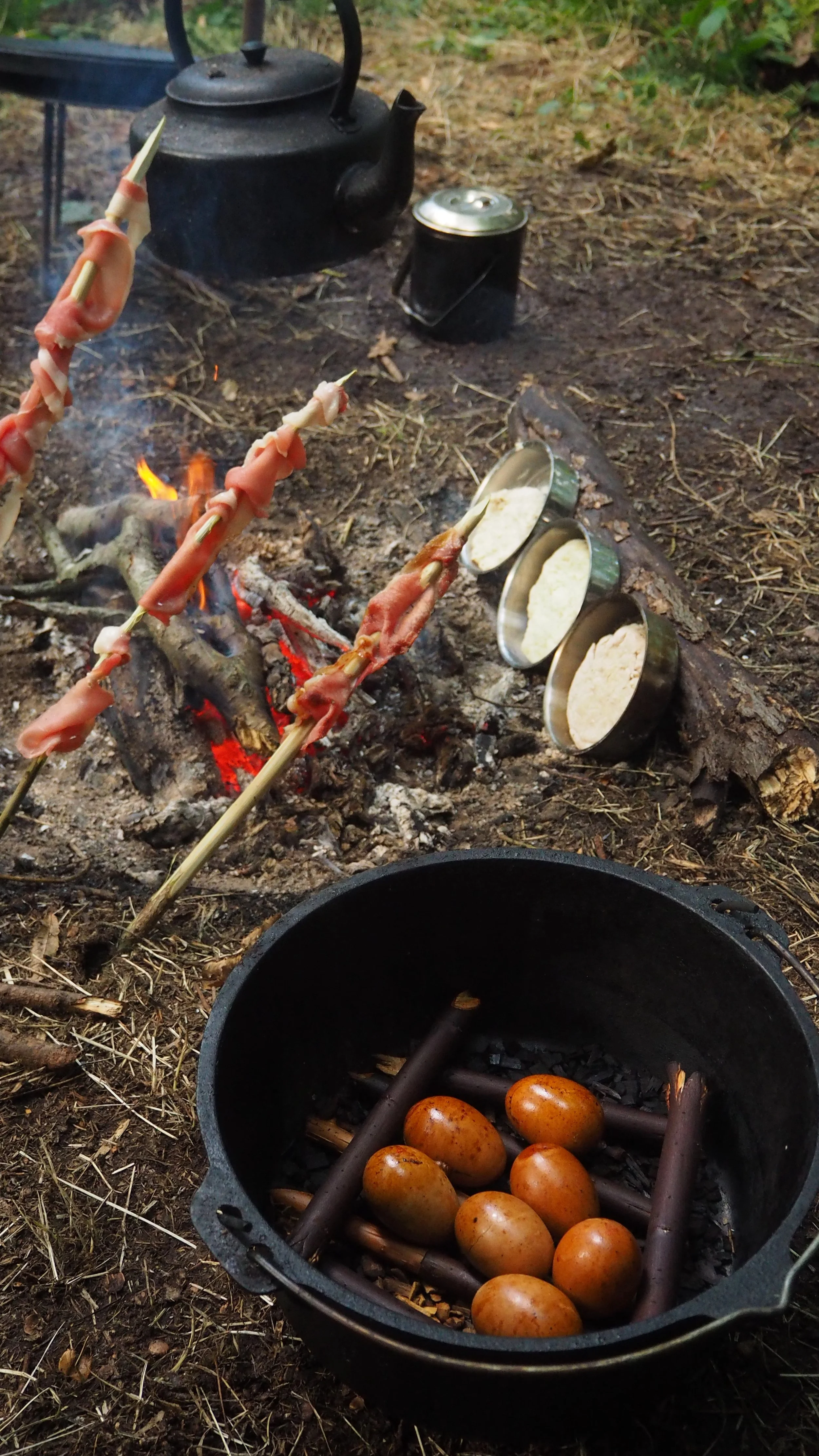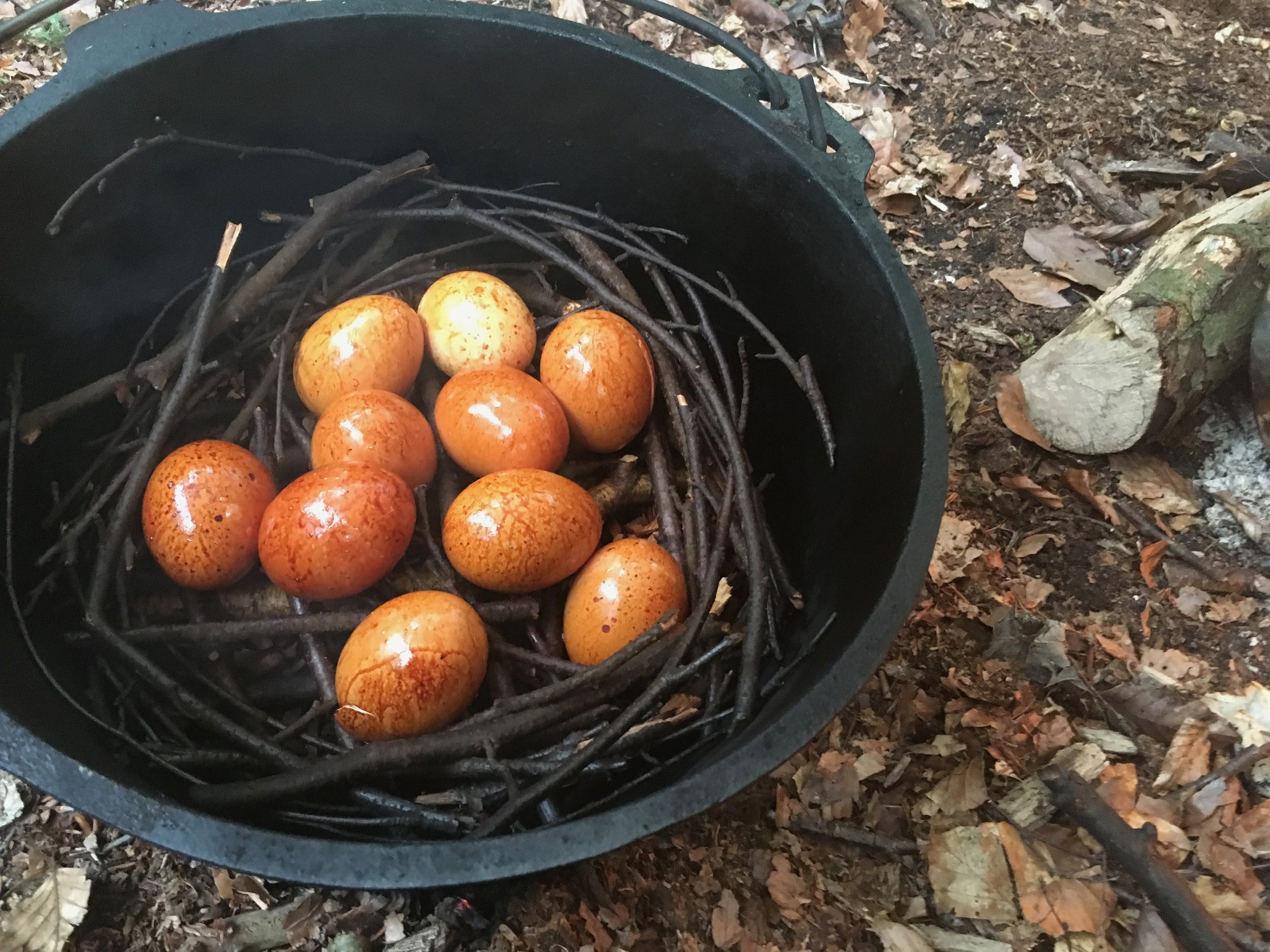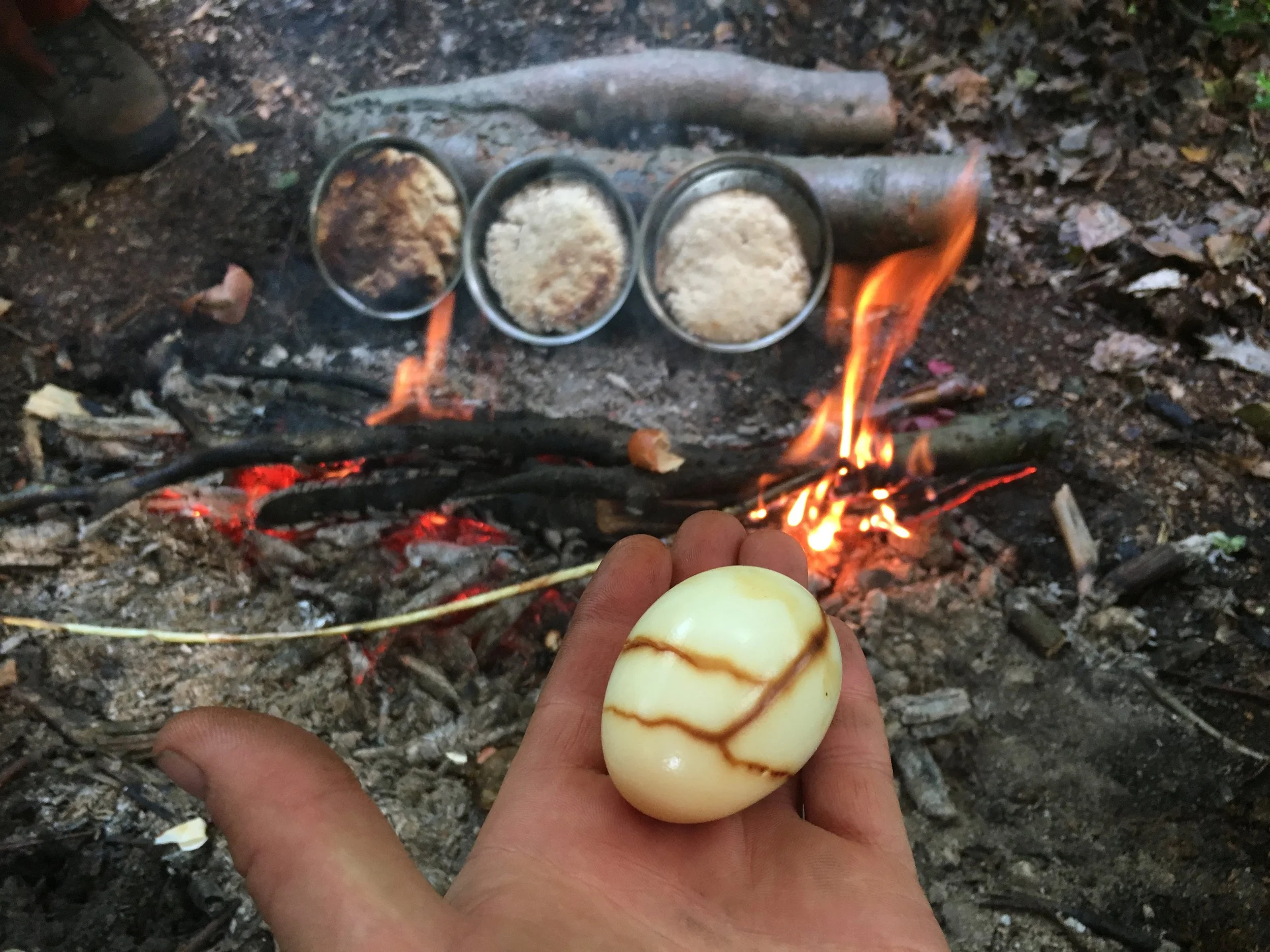Phoenix Eggs - The joy of baking eggs over the fire
Jamie Dakota
Often when adapting to life in the woods, our culinary skills are simplified to better suit the camp fire and the pots we have with us. We loose perhaps some options for cooking that we might find in a modern kitchen, but we also gain options too. Sometimes we choose to embrace the fire, and with it birth some Phoenix eggs!
Here, due to recent interest gained from some photo’s taken on our Itinerant Bushcraft Weekend courses, I thought I’d highlight how I like to use the campfire in a novel way to cook eggs over the fire.
In writing this article I went back through my archive to try and remember when I first started making eggs in this way, the earliest photo I have is from the 4th September 2016 during a professional development course I ran for some Forest School leaders. Which suggests to me that if I was confident in teaching this technique then, I’d probably been doing this for at least several months prior. I do remember where I first saw this though: at a IOL Bushcraft weekend I was teaching at alongside Kev Palmer who I witness adding wood chips and eggs to a dutch oven. So all credit to Kev on this one.
Smoked eggs:
The idea here is to essentially slowly bake the eggs in the heat over a fire, and flavour them with the woodsmoke from the chips in a closed pot. The hot smoke also helps to transmit the heat from the fire all around the eggs while the pot lid is on.
The Preparation:
You’ll need a steady flame under your pot for around 10-15 minutes, so collecting enough firewood and having your fire staged and ready is a good way to start.
You’ll also need a pot, I like a heavy cast iron pot for this as it holds the heat and distributes it well. A steady build up of heat means there’s less chance of an egg-plosion. With a lid on you’ll contain the flavouring smoke and heat as well as protect anyone nearby should an egg pop.
Line the bottom of the pot with about 2cm of wood chips. You could use store bought, or make your own in the woods. What you’re after is food safe wood, in a dry and seasoned condition. Something that would otherwise make good firewood; I like Beech because we have lots of it and it works well, but many’s a fun morning trying different woods to see if a subtle change in flavour can be detected.
If the wood is damp, or green, then you’ll generate steam before you get smoke. You can steam them absolutely! but this makes for a different end result. If you start to steam the eggs in this way before the smoke is generated, the eggs cook from the outside and basically seal the inside of the egg from the smoke. The egg shell is permeable and so if a slow build up of heat comes with smoke being generated you get a better infusion into the egg.
You can either make a deep enough layer of wood chips, say more than 4cm of chips, to protect the eggs from the direct heat from the fire and the hot metal, or you can build a nest to hold the eggs in place. The goal is purely to stop the eggs touching the metal directly as this invariably leads to a heat-spot and a POP. We use whatever we have to hand, of food safe woods, either twigs or peelings to make a nest. We tend to end up doing this on courses as we’re making our own wood chips and it’s quicker to make just enough chips and then a nest, rather than lots more wood chip. Remember, the wood chip is there to generate smoke as it’s primary purpose. The greener the nest sticks, the more steam, so ideally these should also be dry and seasoned but work with what you have.
Cooking:
We want smoke, and a slow steady heat. I tend to cook my eggs over a flame rather than embers initially, but a steady flame not an inferno. The aim is to allow the bottom of the cast iron pot to absorb the heat to char the wood chips so they start creating smoke, without engulfing the whole thing so the eggs cook too quickly. I do with by suspending the pot with a tripod.
With smoke escaping from under the lid consistently for around 20 minutes you should find you have fully cooked eggs. The fun lies in dialling that in give a medium, or even a runny egg!
See the popped egg where it has rolled to touch the metal of the pot.
Just a note:
As your charing the wood chips with the lid on, you’re creating a very low oxygen environment within the pot. This allows for smoke production without it bursting into flames. However, if you remove the lid while the pot is over the fire, or after taking the pot off the fire without allowing it to cool below the un-piloted ignition temperature of the wood chips… you will get flames! My advice is to carefully return the lid to extinguish the flames, and wait for it to cool more.
I hope you enjoy trying this one, and let me know how you get on!
Cheers
JD
If you’d like to learn more about outdoor cooking as well as a host of wilderness skills check out our courses!
Max checks the smoked eggs
Craigy fries a few eggs while the smoked eggs look on in a terrible fury!

